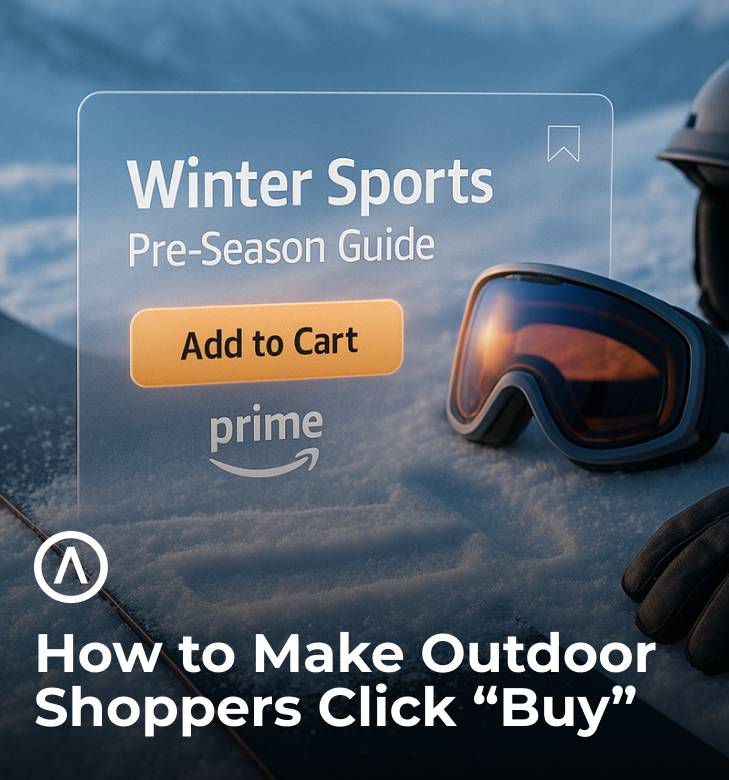
The Ins and Outs of E-commerce
Whether you're just starting an outdoor brand or looking to expand your revenue, e-commerce could be a strategic option. Social media and the Internet have transformed how we shop, especially after the pandemic, and your brand can use this to its advantage. In this article, we'll explain exactly what e-commerce is, how outdoor brands can use it to succeed, and a few examples of brands that are killing the game.
What is E-Commerce?
A general way to define e-commerce is business transactions over the Internet rather than in brick-and-mortar stores. As simple as this may sound, there are many different models that e-commerce can embody.
Some e-commerce shops may offer services online, while others sell products. Some may ship products internationally while others stay domestic. Some e-commerce stores may even focus on selling products to smaller online retailers rather than individuals.
The four common types of e-commerce models, as provided in this article, are below:
- Business to Business: This is exactly how it sounds. Two enterprises interact with one another. E-commerce examples include services like digital marketing, wholesaling, or virtual consulting.
- Business to Consumer: This is one of the most standard e-commerce models where companies provide goods or services to everyday consumers. Examples may include clothing retailers, outdoor gear retailers, and even Amazon.
As e-commerce has risen in popularity, so has a low-risk form business model called dropshipping. In this process, retailers don't keep a product in stock. Instead, they fulfill customers' orders through a third party but add a fee or upcharge to create a profit, essentially acting as a middleman while building a brand and rotation of products in the process.
- Consumer to Business: This is less frequent but involves a consumer reaching out to a business to provide goods or services.
- Consumer to Consumer: This method of e-commerce takes place between two consumers in place of a regular business-to-business transaction. In this situation, e-commerce sites like Depop and OfferUp allow everyday people to sell their products or services to one another without setting up a formal business.

How can Outdoor Brands Utilize E-commerce?
E-commerce can offer many advantages for a business, especially brands in the outdoor industry. First, e-commerce thrives off successful digital presences, so outdoor brands can build off creating a sense of community no matter where in the world a person is. One way to do this is to use social media to build an audience around your product or service.
The great thing about e-commerce is that you can streamline analyzing consumer behavior, marketing your brand, and implementing growth strategies across multiple social platforms like Meta's Instagram and Facebook. Similarly, e-commerce can expand your audience outside of a specific physical location or allow you to sell a product you might not otherwise be able to offer or have access to, like outdoor gear or clothing.
A crucial aspect of strong e-commerce marketing includes directing customers to a strong landing page from social platforms. Additionally, ensure your website or online storefront is enriched with solid graphics, copy, and even video footage of your products in use and how they genuinely add value to outdoor lovers.
Whether you target a specific demographic, region, or outdoor activity enthusiast, e-commerce can take your brand from invisible to essential.
Successful Examples of E-Commerce
Lastly, we want to highlight a few brands succeeding in the e-commerce space.
Havaianas Flip Flops:
Despite slowing sales in its brick-and-mortar stores during the pandemic, Havaianas capitalized on the potential of e-commerce sales. The store closed multiple physical store locations and instead invested in its online platform for selling, manufacturing, and fulfilling orders.
According to this article, the company even partnered with LOCAD, a fulfillment firm, allowing them to process and turn orders over in as little as 24 hours. Despite the risk of shifting to a digital platform from struggling brick-and-mortar stores, this move turned out to be lucrative for the brand.
Outer:
This Forbes article commends outdoor luxury furniture retailer Outer for its use of marketing in e-commerce. Specifically, the brand has used influencer marketing to increase affiliate sales by over 2000% in less than a year.
User-generated content, which the product's consumers create, can also generate buzz and community around a brand. E-commerce can provide tremendous benefits if you correctly integrate your marketing and sales platforms!

Wrapping-Up
Hopefully, after reading this article, you have a few key takeaways about how e-commerce could provide an advantage to your outdoor brand. Through community building, effective web and content design, and an understanding of your business model, e-commerce could usher in a wave of success!
Are you ready to grow?
At Algofy Outdoors, we partner with amazing outdoor brands to provide 360° digital marketing solutions.





